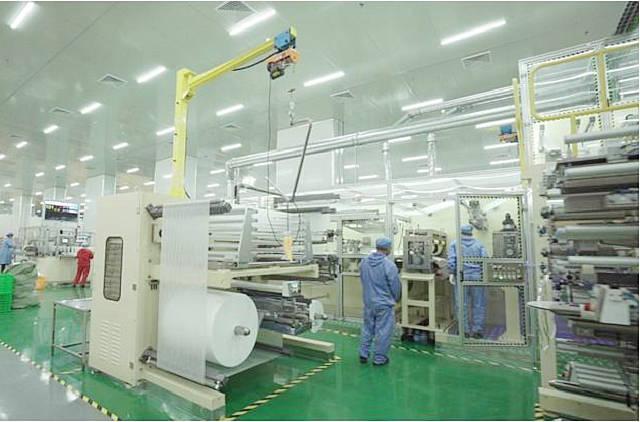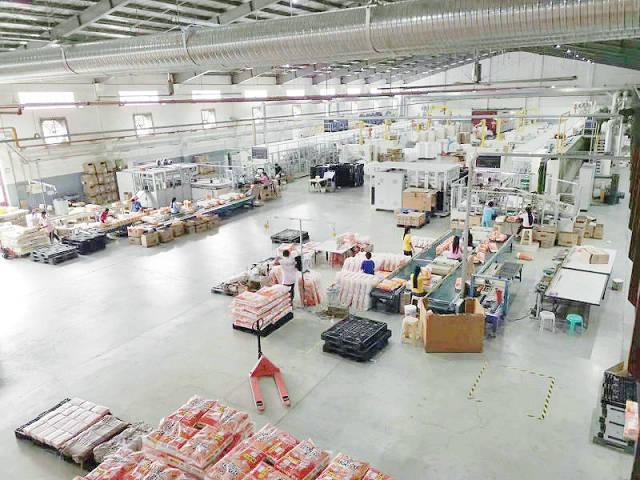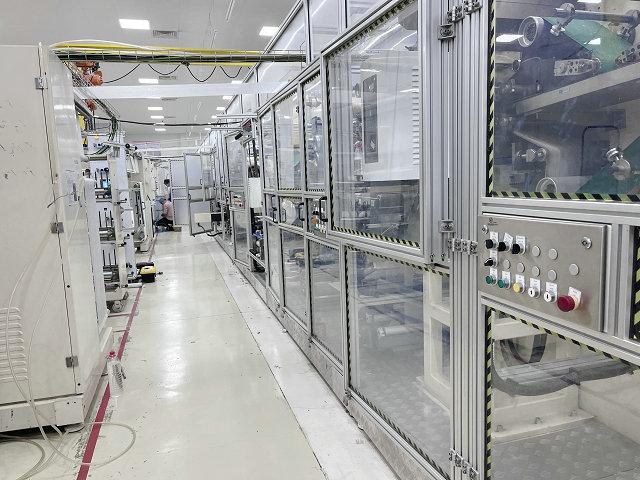Author:Haina Machinery Factory FROM:Diaper Machinery Manufacturer TIME:2024-11-15
Fully Automatic Sanitary Pad Machine play a crucial role in the production of menstrual hygiene products, providing comfort and convenience for millions of women around the world. Understanding how these machines work not only highlights the technology behind sanitary pads but also emphasizes the importance of proper manufacturing processes to ensure product quality and safety. This article will delve into the various stages of production, the components involved, and the overall functioning of a sanitary pad machine.

A typical Fully Automatic Sanitary Pad Machine consists of several key components that work together to produce high-quality pads. These include the unwinding unit, feeding system, forming unit, sealing unit, and packaging machine. Each component is designed to perform specific functions, contributing to the efficiency and effectiveness of the entire production line. Understanding these components will provide insights into the intricate process of sanitary pad manufacturing.
The unwinding unit is the first stage in the production process. It handles the raw materials, such as the absorbent core, top sheet, and back sheet, which are supplied in rolls. The machine unrolls these materials and prepares them for the next steps. Precision in this phase is crucial, as any misalignment can lead to defects in the final product. Operators must monitor the unwinding process closely to ensure a smooth transition to the feeding system.
Once the raw materials are unwound, they move to the feeding system. This system precisely cuts the materials into the required sizes for each Fully Automatic Sanitary Pad Machine. The cutting process must be accurate to maintain uniformity among the pads. The feeding system also ensures that the layers, including the absorbent core and the top and back sheets, are aligned correctly for further processing. Automation in this part of the machine enhances speed and reduces human error.
The forming unit is where the actual pad shape is created. Here, the aligned materials are brought together, and the absorbent core is sandwiched between the top and back sheets. The machine uses heat and pressure to bond these layers, ensuring that the absorbent material stays in place and does not shift during use. This step is critical for the performance of the sanitary pads, as it directly impacts their absorbency and comfort.
After the pads are formed, they move to the sealing unit. This component applies adhesives or uses heat sealing techniques to secure the edges of the pads. Proper sealing is essential to prevent leakage and ensure that the pads remain intact during use. The sealing process also contributes to the overall aesthetics of the product, giving the pads a finished look. Quality control checks are often implemented at this stage to ensure that all pads meet safety standards.
Once the Fully Automatic Sanitary Pad Machine are fully formed and sealed, they enter the packaging process. This stage involves folding the pads and placing them in individual wrappers or boxes, depending on the brand's specifications. Automated packaging machines are used to enhance efficiency and ensure that the pads are securely packaged to maintain hygiene. The packaging not only protects the pads but also provides important information to consumers, such as usage instructions and ingredients.
Quality control is an integral part of the sanitary pad manufacturing process. Throughout the production stages, various checks are performed to ensure that each batch meets established standards. This includes inspecting the raw materials, testing the absorbency of the pads, and checking the integrity of the seals. By implementing rigorous quality control measures, manufacturers can minimize defects and ensure the safety and reliability of their products.

To maintain optimal operation, regular maintenance of sanitary pad machines is essential. Routine checks on parts such as blades, rollers, and sensors help prevent breakdowns and ensure continuous production. Additionally, manufacturers often seek to improve efficiency through technological advancements, such as incorporating automation and real-time monitoring systems. These innovations not only streamline operations but also enhance product quality and reduce waste.

As environmental concerns grow, many manufacturers are exploring sustainable practices in sanitary pad production. This includes using biodegradable materials, reducing energy consumption, and minimizing waste during the manufacturing process. By adopting eco-friendly approaches, companies can contribute to a greener future while still meeting the needs of consumers. Sustainable practices are becoming increasingly important in attracting environmentally conscious customers.
In summary, understanding how a Fully Automatic Sanitary Pad Machine operates reveals the complexity and precision involved in producing one of the essential products for women's health. From the unwinding of raw materials to the final packaging, each stage plays a vital role in ensuring that the end product is safe, comfortable, and effective. As technology advances and sustainability becomes a priority, the manufacturing process will continue to evolve, ultimately benefiting both consumers and the environment. Awareness of these processes underscores the importance of quality manufacturing in the sanitary products industry.
